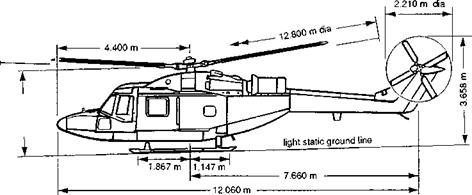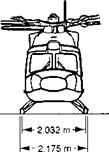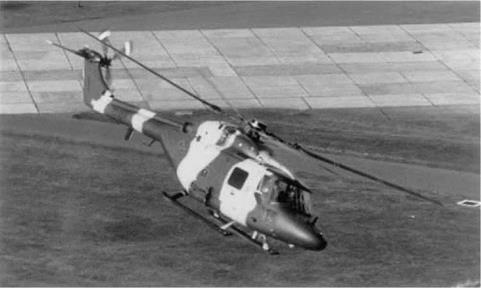Appendix 4B The Three Case Helicopters: Lynx, Bo105 and Puma
4B.1 Aircraft configuration parameters The DRA (RAE) research Lynx, ZD559
The Westland Lynx Mk 7 is a twin engine, utility/battlefield helicopter in the 4.5-ton category currently in service with the British Army Air Corps. The DRA Research Lynx (Fig. 4B.1) was delivered off the production line to RAE as an Mk 5 in 1985 and modified to Mk 7 standard in 1992. The aircraft is fitted with a comprehensive instrumentation suite and digital recording system. Special features include a strain-gauge fatigue usage monitoring fit, and pressure – and strain-instrumented rotor blades for fitment on both the main and tail rotor. The aircraft has been used extensively in a research programme to calibrate agility standards of future helicopter types. The four-bladed hingeless rotor is capable of producing
|
|
Fig. 4B.1 DRA research Lynx ZD559 in flight
|
Table 4B.1 Configuration data – Lynx
|




large control moments and hence angular accelerations. A 1960’s design, the Lynx embodies many features with significant innovation for its age – hingeless rotor with cambered aerofoil sections (RAE 9615, 9617), titanium monoblock rotor head and conformal gears.
A three-view drawing of the aircraft is shown in Fig. 4B.2. The physical characteristics of the aircraft used to construct the Helisim simulation model are provided in Table 4B.1.












